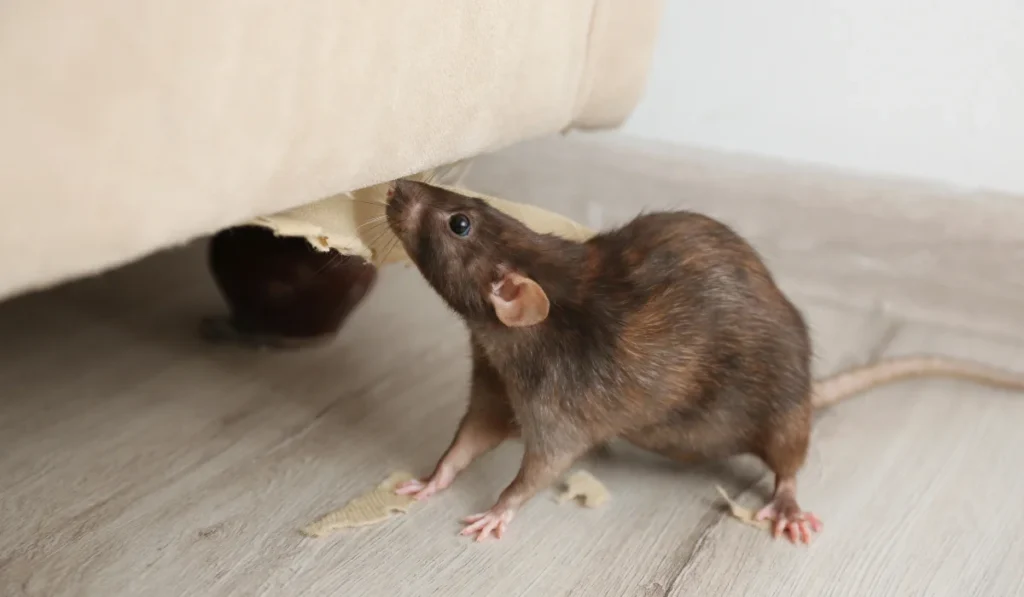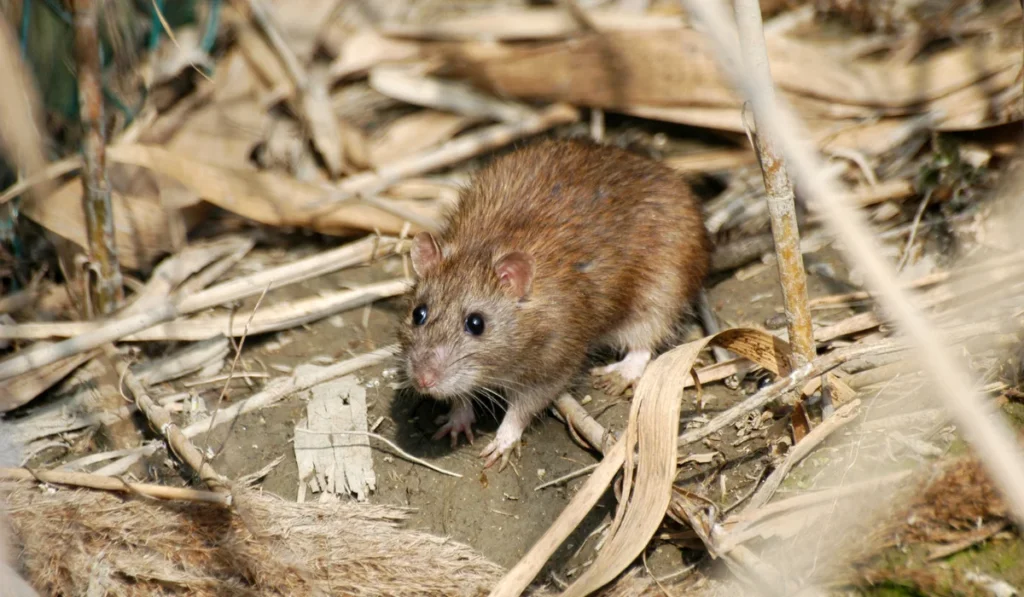
Fort Worth has many kinds of rodents, and problems can escalate quickly once they get inside. Homeowners may hear scratching in the attic, find droppings near storage areas, and see chew marks on wires or drywall. Rodents hide well, so trouble grows before you notice.
In Fort Worth, the most common types of rodents are Norway rats, roof rats, and house mice. They slip in through small gaps and stay if food and shelter are readily available. Across older areas, new builds, and business zones, rodent activity runs year-round.
In this guide, we’ll explain the common types of rodents in the area, how they enter homes, and how professional pest control in Fort Worth, TX, helps stop property damage and recurring problems.
The types of rodents Fort Worth, TX, neighborhoods encounter remain active year-round. Mild winters and varied landscapes make the Dallas-Fort Worth region ideal for several species.

House mice live across North Texas and stay active all year. They have large ears, long tails, and gray or light brown fur. Mice squeeze through tiny gaps in doors, pipes, and siding, and often nest behind appliances or in closets. Look for droppings near food or inside pantries.
They breed fast and move through wall voids and cabinets. Older areas such as the Stockyards and Arlington Heights often see early mouse activity because of gaps in aging construction.

Norway rats, or sewer rats, are heavy-bodied with dark brown fur and short, scaly tails. They stay low and dig burrows near foundations, sheds, and drains. They are common in older neighborhoods, downtown, and busy commercial areas with easy access to trash.
They chew wires, insulation, and wood, which can cause serious damage. If you’ve ever wondered how big rats can get, Norway rats are among the largest found in North Texas. They may carry fleas and spread illnesses such as salmonellosis and leptospirosis.

Roof rats are slim, quick climbers that use fences, branches, garages, and utility lines. They enter attics through vents or roof gaps. Areas with tall trees, like Westcliff and Tanglewood, see more roof rat activity.
They leave droppings on beams, chew insulation, and nest in warm attic corners. Nighttime scratching is a common early sign. Because they move fast and stay quiet, infestations grow before you notice.
Rodents enter for shelter and food. Small gaps at siding, vents, attics, and utility lines lead straight indoors. Even new homes can have openings big enough for mice or rats.
Leftover pet food, open trash, and overgrown plants attract rodents. Tree limbs that touch the roof give roof rats a bridge. Cluttered storage gives mice places to hide.
Many Fort Worth homeowners watch for termites, but rodents can be just as destructive once they reach walls and insulation.
Rodents create serious health risks when they leave droppings, urine, and bacteria behind as they move through kitchens, storage areas, garages, and attics. When these areas are disturbed, airborne particles can spread through the home.
While rats don’t carry rabies, rodents can spread diseases such as hantavirus, salmonellosis, and leptospirosis.
Fleas carried by mice and rats can also affect pets and humans. These health risks increase when an infestation grows or when rodents reach heating and cooling spaces.
At Forterra Pest Control, we remove rodents safely and address contaminated areas without putting families at risk.
Prevention starts with removing food, water, and shelter. Store pantry items in sealed bins, clean crumbs, and clear clutter so rodents have fewer places to live. Keep trash cans shut and bring pet food inside at night.
Tree branches that touch the roof let roof rats reach attics. Trim limbs and clear debris to reduce risk. Even with good habits, rodents can chew through siding or find weak points in vents.
DIY steps may help for a short time, but complete removal usually needs a professional. For dependable help, contact a professional rat exterminator & rodent control in Dallas-Fort Worth, TX, who can provide exclusion, ongoing service, and long-term monitoring to keep homes rodent-free.
Protecting your home from rodents is about staying ahead before they settle in. Sealing gaps, trimming trees, and properly storing food can make a big difference. Still, when signs appear or noises continue, expert help brings faster, lasting results.
At Forterra Pest Control, we provide reliable rodent removal and prevention tailored to North Texas homes and businesses. Our trained team focuses on long-term protection and safer living spaces.
Contact us today to schedule your inspection and keep your property rodent-free year-round.
The most common rodents are Norway rats, roof rats, and house mice. These species adapt quickly and take advantage of minor entry points around homes and commercial buildings.
Look at the size, droppings, and location of activity. Roof rats live in attics, Norway rats live near burrows, and house mice hide in tight indoor spaces. A Forterra inspection can quickly identify the species.
Yes. Rodents can chew drywall, insulation, wiring, and stored items. Their chewing habits and nesting behavior cause property damage that worsens as the infestation spreads.
